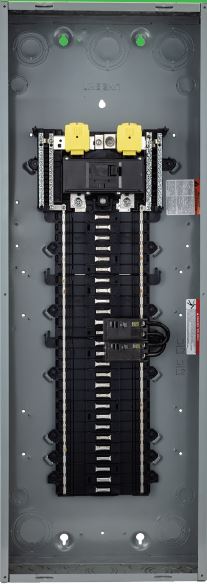Interlock Kits vs. Split Bus Panels: What’s Best for your Customers?
Credit to Author: Employee Voices| Date: Fri, 18 Oct 2019 20:09:44 +0000
Written by Guest Blogger, Michele Hix, Vice President, Sales – West Region, USA.
The power just went out. Is your phone ringing off the hook?
This week we saw widespread weather-related power outages across the northeast United States. PG&E issued a preemptive outage in California just days ago to reduce the risk of wildfire. No, you aren’t imagining it. Power outages due to the U.S.’s aging infrastructure, whether intentional or not, are on the rise.
As a contractor, when the lights go out, you probably get calls — lots of them, asking how quickly you can prepare a home for a generator.
And that makes sense. Generators are the go-to solution for your customers looking to keep the power on. However, your electrical expertise is essential for installation, particularly when it comes to choosing how to connect the generator to an existing electrical panel.
The two most common connection options for a generator are interlock kits and split bus panels. Let’s discuss the pros and cons of each.
Interlock kits: Quick but manual
Similar to a manual transfer switch, an interlock kit in conjunction with a two-pole breaker connects a generator to the electrical panel. The kit works by ensuring the main breaker is in an off position before the dedicated two-pole generator breaker can be switched on. Thus, it isolates the energy created by the generator and blocks it from back-feeding into the electrical grid when the power turns back on.
These kits are inexpensive and relatively easy way to connect a generator. You can get a standard interlock kit for around $50 from your go-to distributor or a big-box retailer. Installation averages between 15 and 30 minutes.
Compared to a transfer switch, which is limited to a particular number of circuits, an interlock kit allows you to run power from a generator to any circuit within the electrical panel. While this is good in theory, there’s a risk of overloading the generator if it’s not sized according to the load.
To avoid this situation, I suggest educating your customers on sizing the right generator for their home, as well as teaching them how to switch on and off the loads manually. Also, consider working with them to label each circuit as either essential or non-essential. That way, your customer knows which circuit breakers to turn off or keep on during an outage.
Split bus panels: One switch solution
Although an interlock kit seems like a smart connection solution for the average homeowner, some people may not feel comfortable manually switching the system and each critical circuit breaker on and off. That’s where split bus panels come into play.

Compared to interlock kits, split bus panels take the guesswork out of the process. These panels are installed in place of the home’s existing electrical panel and operate like a standard breaker panel. The difference is that a split bus panel separates critical from non-critical loads.
When the power shuts off, the homeowner doesn’t have to pick and choose which circuit breakers to switch on like they would with an interlock kit. Instead, they can manually transfer power to a generator with the flip of one switch, and only feed power from that generator to the circuit breakers located on the critical portion of the panel.
In terms of price, split bus panels cost slightly more than a standard breaker panel from your distributor. The higher cost is attributed to the additional two 60 amp two-pole breakers that are necessary to transfer the power from the non-critical load section to the critical load section of the panel.
Installing this new panel is more time-consuming and expensive, but it provides homeowners who live in outage-prone areas a faster experience.
Preparing for an uncertain future
As we continue to overburden the U.S.’ aging grid and deal with the impacts of climate change, you’ll be called on to provide your customers options for reliable energy. Interlock kits and split bus panels are essential products for energy generation, but they are just one piece of the puzzle.
Encouraging your customers to use data to understand their energy usage and respond to it in real-time is the next step. Home energy monitors such as Wiser Energy  are a logical solution for this. These systems are designed to give homeowners 24/7 access and control of their home’s power by showing exactly how much energy individual electrical devices in the home draw. Plus, offering these monitors allows you to expand your business offerings and gain a competitive edge.
are a logical solution for this. These systems are designed to give homeowners 24/7 access and control of their home’s power by showing exactly how much energy individual electrical devices in the home draw. Plus, offering these monitors allows you to expand your business offerings and gain a competitive edge.
Get connected with the products you need to keep your customer’s power on.
Author: Michele Hix, Vice President, Sales – West Region, USA.

The post Interlock Kits vs. Split Bus Panels: What’s Best for your Customers? appeared first on Schneider Electric Blog.